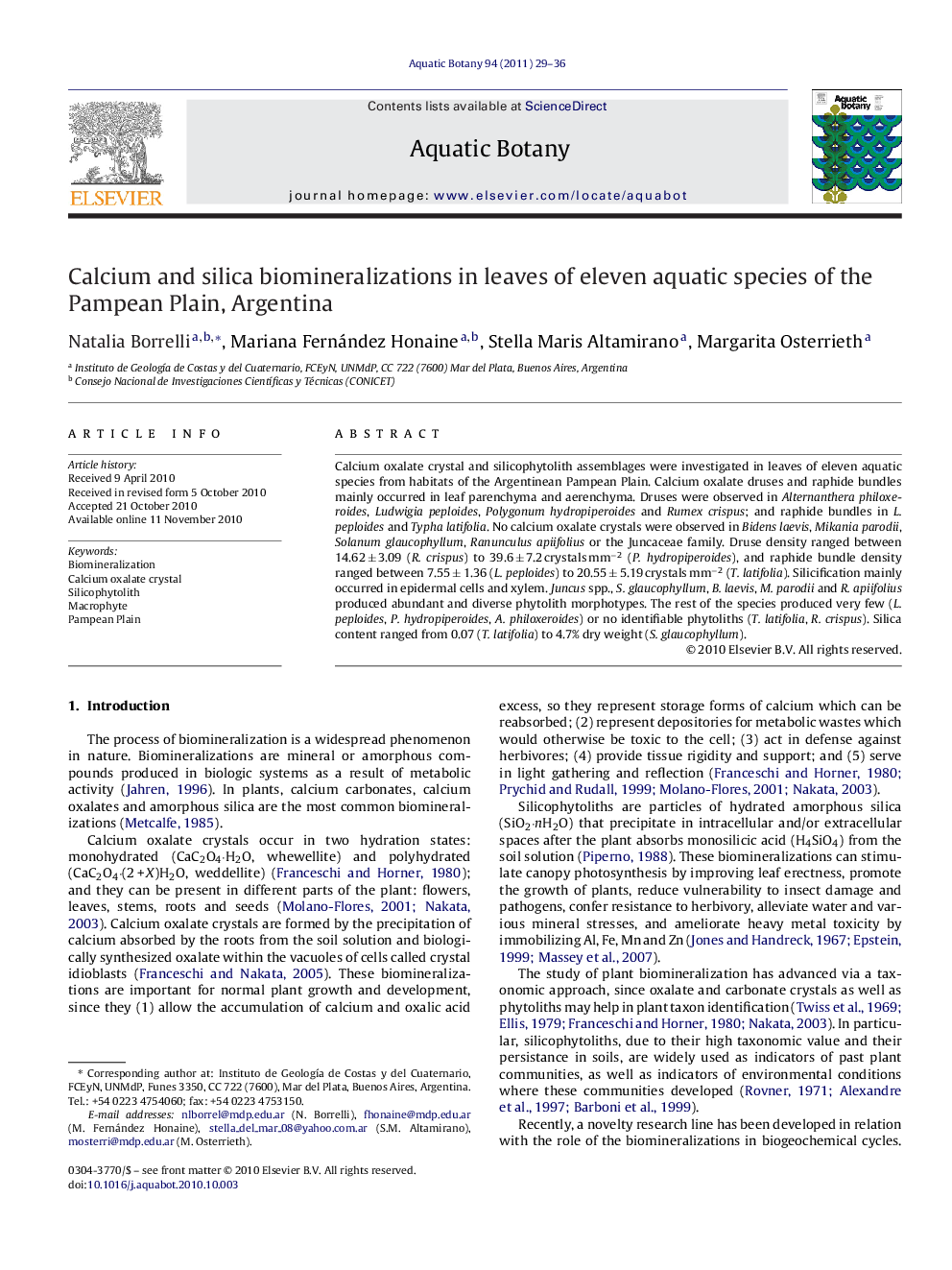| Article ID | Journal | Published Year | Pages | File Type |
|---|---|---|---|---|
| 4528181 | Aquatic Botany | 2011 | 8 Pages |
Calcium oxalate crystal and silicophytolith assemblages were investigated in leaves of eleven aquatic species from habitats of the Argentinean Pampean Plain. Calcium oxalate druses and raphide bundles mainly occurred in leaf parenchyma and aerenchyma. Druses were observed in Alternanthera philoxeroides, Ludwigia peploides, Polygonum hydropiperoides and Rumex crispus; and raphide bundles in L. peploides and Typha latifolia. No calcium oxalate crystals were observed in Bidens laevis, Mikania parodii, Solanum glaucophyllum, Ranunculus apiifolius or the Juncaceae family. Druse density ranged between 14.62 ± 3.09 (R. crispus) to 39.6 ± 7.2 crystals mm−2 (P. hydropiperoides), and raphide bundle density ranged between 7.55 ± 1.36 (L. peploides) to 20.55 ± 5.19 crystals mm−2 (T. latifolia). Silicification mainly occurred in epidermal cells and xylem. Juncus spp., S. glaucophyllum, B. laevis, M. parodii and R. apiifolius produced abundant and diverse phytolith morphotypes. The rest of the species produced very few (L. peploides, P. hydropiperoides, A. philoxeroides) or no identifiable phytoliths (T. latifolia, R. crispus). Silica content ranged from 0.07 (T. latifolia) to 4.7% dry weight (S. glaucophyllum).
Research highlights▶ Calcium and silica biomineralizations were investigated in leaves of aquatic species (Argentina). ▶ Calcium oxalate crystals, druses and raphide bundles, occurred in parenchyma and aerenchyma. ▶ Druses density was 14–39 crystals mm−2 and raphide bundles density was 7–20 crystals mm−2. ▶ Epidermis and xylem were the most silicified tissues; silica content was 0.07–4.7% dry wt. ▶ Morphologies included stomata, tabular polygonal, jigsaws, multicellular hairs and tracheids.
